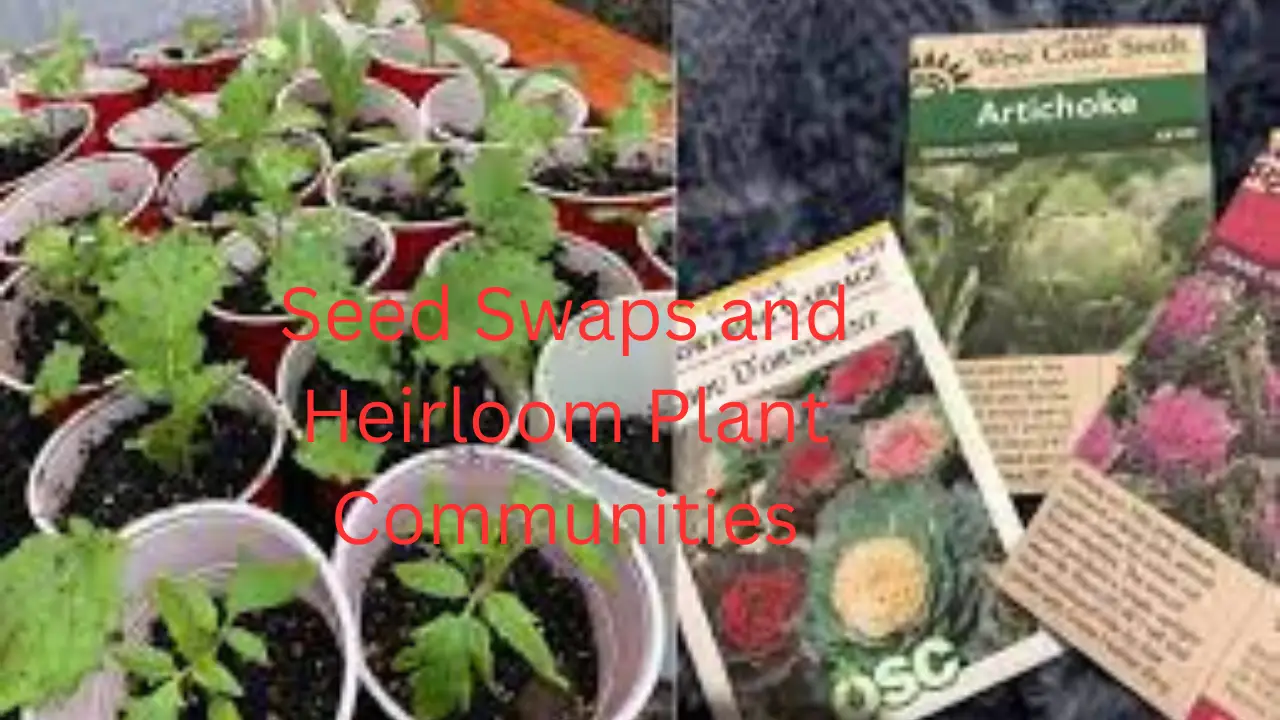
bussdis Under Cabinet Banana Hook Foldable - Adhesive Banana Hanger, Magnetic Banana Holder Hook Under Counter, Sticky Banana Hook, Metal, Black
$7.99 (as of October 22, 2024 10:19 GMT +00:00 - More infoProduct prices and availability are accurate as of the date/time indicated and are subject to change. Any price and availability information displayed on [relevant Amazon Site(s), as applicable] at the time of purchase will apply to the purchase of this product.)Seed Swaps and Heirloom Plant Communities: Cultivating a Sustainable Garden
Introduction
In the world of gardening and sustainable agriculture, the concept of seed swaps and heirloom plant communities has gained remarkable significance. Gardeners and enthusiasts alike are increasingly recognizing the value of preserving traditional plant varieties, fostering biodiversity, and sharing seeds within their communities. This article delves into the fascinating realm of seed swaps, explores the significance of heirloom plants, and provides insights into building and nurturing thriving heirloom plant communities.
Understanding Seed Swaps
What are Seed Swaps?
Seed swaps are communal events where gardeners and plant enthusiasts come together to exchange seeds. These gatherings promote biodiversity and ensure the preservation of unique plant varieties that might otherwise be lost over time. They serve as hubs for sharing knowledge, experiences, and seeds among gardening enthusiasts.
Benefits of Seed Swaps
- Preserving Genetic Diversity: Seed swaps play a crucial role in preserving the genetic diversity of plants. By exchanging seeds, gardeners help maintain a wide range of plant species and varieties.
- Adaptability: Heirloom seeds passed down through generations often have remarkable adaptability to local conditions. Seed swaps allow gardeners to access these unique varieties, which can thrive in specific climates or regions.
- Community Building: Seed swaps foster a sense of community among gardeners. They provide opportunities for networking, learning, and sharing gardening tips and tricks.
Heirloom Plants: Treasures of the Past
What are Heirloom Plants?
Heirloom plants are plant varieties that have been cultivated for generations, often for a century or more. These plants have retained their original traits and characteristics, making them valuable for both historical and culinary reasons.
The Significance of Heirloom Plants
- Flavor and Quality: Heirloom plants are prized for their exceptional taste and quality. Tomatoes, for example, come in a wide array of flavors, colors, and textures in the heirloom category, offering unique culinary experiences.
- Historical Connections: Growing heirloom plants connects us to our agricultural heritage. It allows us to grow the same varieties that our ancestors cultivated, preserving a living link to the past.
- Biodiversity: Heirloom plants contribute to biodiversity by offering a diverse range of plant species and traits. This diversity can be vital for the resilience of our food systems.
Building Heirloom Plant Communities
Starting a Seed Swap Group
- Find Like-Minded Gardeners: Identify fellow gardeners and enthusiasts who share an interest in heirloom plants and seed swaps. Local gardening clubs and online communities can be excellent places to start.
- Choose a Venue: Decide where your seed swap events will take place. Local community centers, libraries, or even your own garden can serve as suitable locations.
- Set Guidelines: Establish guidelines for your seed swap, such as how seeds should be labeled and what types of seeds are welcome.
Nurturing the Community
- Educational Workshops: Organize workshops on seed saving, plant propagation, and heirloom plant care to empower your community members.
- Regular Gatherings: Schedule regular seed swap events to keep the community engaged and connected throughout the year.
- Online Presence: Create an online platform or social media group to facilitate year-round communication and seed sharing.
Conclusion
Seed swaps and heirloom plant communities are not only about gardening but also about preserving our cultural and agricultural heritage. By participating in these activities, gardeners can make a meaningful contribution to biodiversity, sustainability, and community building. So, grab your gardening gloves, join a seed swap, and start cultivating a vibrant heirloom plant community in your area.
FAQs
- What is the difference between heirloom and hybrid plants? Heirloom plants are open-pollinated varieties that have been passed down through generations, while hybrid plants are the result of cross-breeding between two different varieties to create specific traits.
- How do I start saving seeds from my garden? To save seeds, allow the plant to mature fully, collect the seeds, and store them in a cool, dry place. Research specific guidelines for the plant species you’re interested in.
- Are seed swaps legal everywhere? Seed swap regulations vary by location. It’s essential to research local laws and regulations regarding seed swapping and adhere to them.
- Can I participate in a seed swap if I’m a novice gardener? Absolutely! Seed swaps are open to gardeners of all skill levels. They are an excellent opportunity to learn from experienced gardeners and start your gardening journey.
- How can I find seed swap events in my area? You can search online for local gardening clubs, social media groups, or websites that list upcoming seed swap events in your region.











